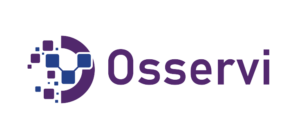Calculating PRSI contributions involves understanding the contribution classes, income thresholds, and applicable rates. While the calculations can vary based on individual circumstances, the following steps outline a general approach to calculating PRSI:
Step 1: Determine the Contribution Class: Identify the appropriate contribution class based on the employment type and circumstances. For example, Class A is typically applicable to most full-time employees, while Class S is for self-employed individuals without employees.
Step 2: Determine the Earnings: Determine the employee’s reckonable earnings. Reckonable earnings include regular wages, salary, bonuses, commissions, and other taxable income. Some types of income, such as reimbursements for expenses, may be exempt from PRSI.
Step 3: Apply the PRSI Rates: Refer to the PRSI rate tables provided by the Revenue Commissioners to determine the applicable rates for the specific contribution class and income thresholds. The rates are usually expressed as a percentage of reckonable earnings.
Step 4: Calculate the PRSI Contribution: Multiply the employee’s reckonable earnings by the applicable PRSI rate to calculate the PRSI contribution. For example, if the applicable rate is 4% and the reckonable earnings are €2,000, the PRSI contribution would be €80 (€2,000 x 4%).
Step 5: Consider any PRSI Exemptions or Allowances: Certain exemptions and allowances may apply to specific categories of employees. For instance, employees under the age of 16 might be exempt from PRSI. Consult the guidelines provided by the Revenue Commissioners to determine if any exemptions or allowances apply.
Step 6: Determine the Employer’s PRSI Contribution: Employers are responsible for contributing to PRSI on behalf of their employees. The employer’s PRSI contribution rate is separate from the employee’s rate and is calculated based on the employee’s reckonable earnings and the applicable employer PRSI rate.
Step 7: Total PRSI Deduction: Add the employee’s and employer’s PRSI contributions together to calculate the total PRSI deduction. This deduction should be subtracted from the employee’s gross pay to determine the net pay.
It is important to note that PRSI calculations can be complex, and individual circumstances may impact the specific calculations. For more precise calculations and to ensure compliance, employers and employees should consult the guidelines provided by the Revenue Commissioners or seek advice from a payroll professional or tax advisor.
Remember, accurate calculation and remittance of PRSI contributions are essential for meeting legal requirements and providing employees with access to social welfare benefits.
Understanding PRSI: Your Guide to Statutory Deductions and Contributions
Introduction: When it comes to managing payroll, understanding statutory deductions and contributions is crucial. One significant aspect of payroll management in Ireland is the Pay Related Social Insurance (PRSI) system. PRSI plays a vital role in funding Ireland’s social welfare system, providing various benefits to employees. In this guide, we will delve into the key concepts of PRSI, including its purpose, contribution classes, rates, and benefits. Whether you’re an employer or an employee, this comprehensive overview will equip you with the knowledge needed to navigate the PRSI landscape effectively.
- What is PRSI? PRSI, or Pay Related Social Insurance, is a social security system in Ireland that funds various social welfare benefits and pensions. It operates on a pay-as-you-earn basis, where both employees and employers contribute to the system based on the employee’s earnings.
- Purpose of PRSI: PRSI serves several purposes, including providing financial support for employees during periods of illness, unemployment, retirement, and other contingencies. Additionally, it contributes to the funding of healthcare services, maternity benefits, and other social welfare programs.
- PRSI Contribution Classes: PRSI contributions are divided into different classes based on employment type, earning thresholds, and entitlements. Some common contribution classes include: a. Class A: For employees earning above a specific threshold, including most full-time workers. b. Class J: For employees who are officeholders, such as company directors. c. Class S: For self-employed individuals who do not have any employees. d. Class M: For employees under 16 years of age.
- PRSI Contribution Rates: PRSI contribution rates vary depending on the contribution class and the employee’s income. The rates are typically a percentage of the employee’s reckonable earnings. This section will provide an overview of the different contribution rates applicable to each class.
- Benefits and Entitlements: PRSI contributions enable employees to access a range of social welfare benefits, including: a. Jobseeker’s Benefit: Provides financial support to individuals who become unemployed. b. Illness Benefit: Offers income support to employees who are unable to work due to illness or injury. c. Maternity Benefit: Aims to support women during their maternity leave. d. State Pension: Provides a pension to individuals who reach the statutory retirement age.
- PRSI Compliance and Responsibilities: Employers have specific responsibilities when it comes to PRSI, such as deducting the employee’s contributions from their wages and remitting them to the Revenue Commissioners. This section will outline the obligations of both employers and employees to ensure compliance with PRSI regulations.
- PRSI and Taxation: Understanding the relationship between PRSI and taxation is crucial for both employers and employees. This section will highlight the key points of intersection between PRSI contributions and the Irish tax system.
Conclusion: Mastering the concepts of PRSI is essential for employers and employees alike. This comprehensive guide has covered the fundamental aspects of PRSI, including its purpose, contribution classes, rates, benefits, compliance, and taxation. By familiarizing yourself with these concepts, you can ensure accurate payroll management while maximizing the benefits available to employees. Stay informed, stay compliant, and navigate the world of PRSI with confidence.
More info Read Here: https://www.revenue.ie/en/employing-people/paying-your-employees-tax-to-revenue/prsi.aspx
Continue Reading
Get a personal consultation.
Call us today at (01) 5170179
Packages to suit your budget (we are on avg 30% better value than competitors)..
Frequent Searches Leading To Pages:
Payroll Services Ireland | Payroll Services | Payroll Ireland | Payroll Outsourcing Ireland | Outsourced Irish Payroll | Outsource Payroll Services Ireland | Outsourced Irish Payroll Services Dublin & Ireland | Ireland Payroll Service | Payroll companies Ireland | Payroll service provider





